Couched in Wyoming’s Jackson Hole Valley in the Rocky Mountains, is Jackson Hole Mountain Resort (JHMR). Operating for 56 years, JHMR is renowned for its premium amenities, its famed couloirs, and most notably, its 4,139 vertical feet.
With 130 runs, the resort offers something for skiers and snowboarders of all abilities. Ten percent of the runs cater to beginners, 40 percent to those of intermediate ability and 50 percent to experts. The steep and challenging terrain draws people. Not to mention the annual snowfall average of over 450 inches, augmented by a busy snowmaking season that runs from October to December, is an added draw.
“Jackson Hole Mountain Resort is incredible” said Eric Seymour, JHMR’s director of communications. “It’s known for its steep terrain and continuous vertical and equipped with 13 lifts including the Aerial Tram, two gondolas, high speed quads and fixed gripped chairs.”
In addition to the fine dining, live entertainment, spas and other tourist attractions, there are other scenic destinations to explore nearby. Bridger Teton National Forest, Grand Teton National Park and Yellowstone National Park are all a short drive away, as is the National Elk Refuge, where some 10,000 elk congregate and overwinter.
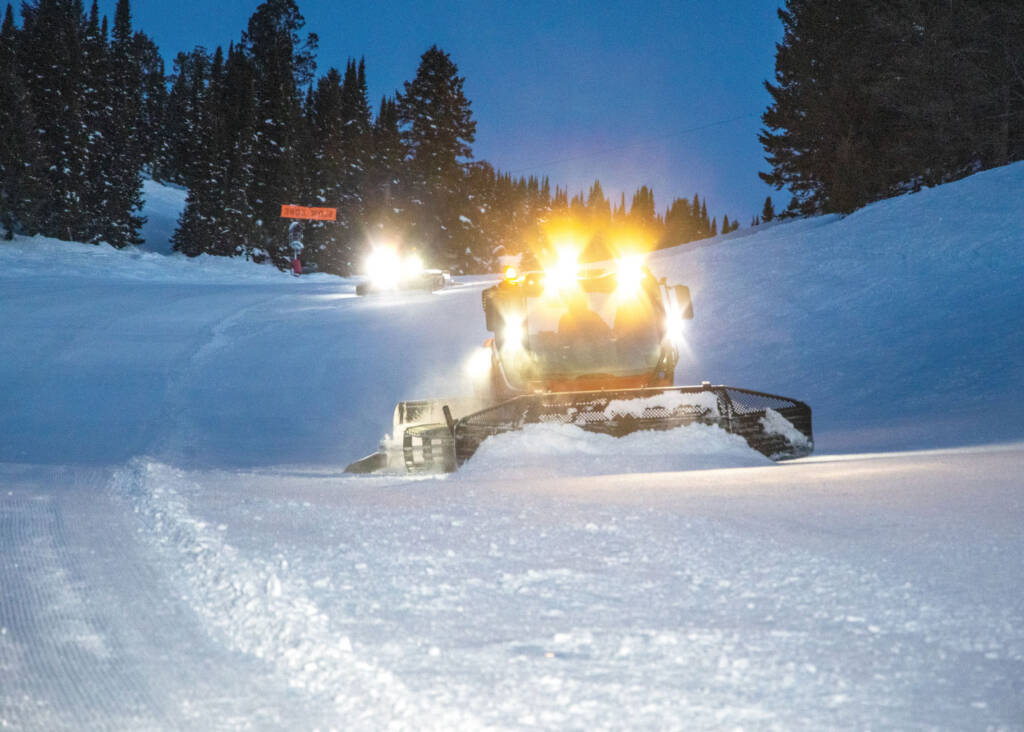
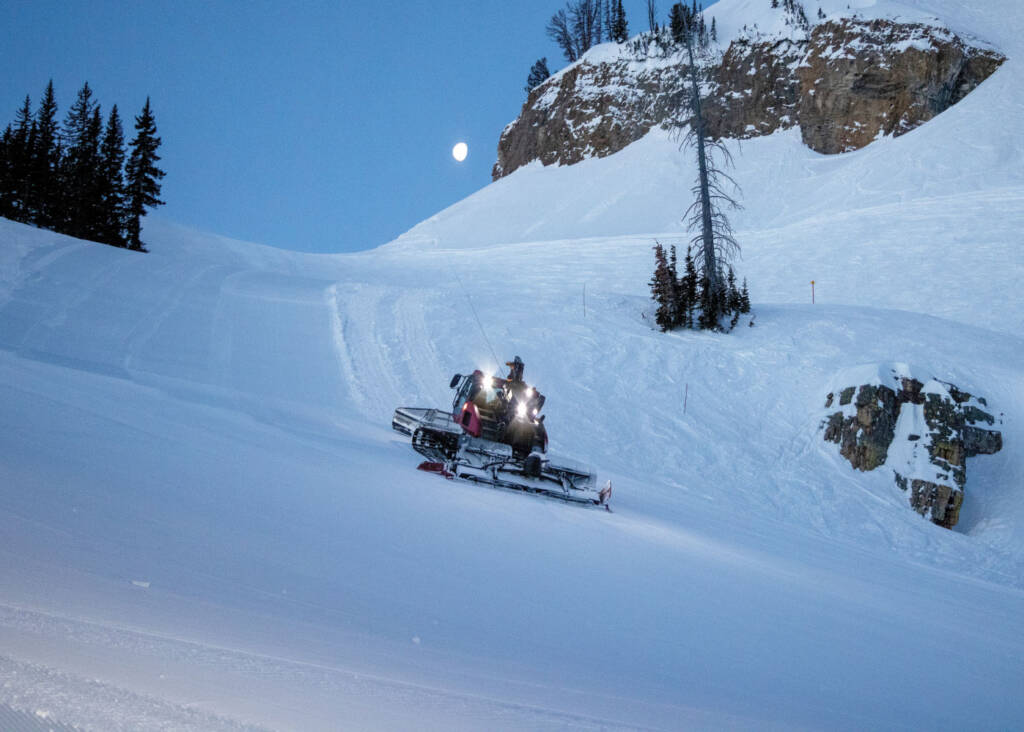
“It is just a gorgeous area. JHMR is a destination resort and offers a premium destination experience,” said Seymour.
Even during the height of the Covid-19 restrictions, JHMR continued to provide an exceptional guest experience.
“JHMR started requiring reservations because of Covid-19. But because it resulted in shorter lines at the lifts, and a more evenly distributed demand instead of a few peak days, and an overall improved experience for our guests, we are bringing it back next year,” said Seymour.
Helping to deliver JHMR’s premium guest experiences is a staff of over 1,800 personnel during the peak season, including a dedicated group of 35 groomers managed by grooming manager Earl Ward.
Ward started working at the resort in May of 1974. He started working his summers while in high school, cleaning bathrooms, and then became a lift crew worker. Eventually, the mountain manager at the time put him on a trail crew, and in the 1978/79 season, he began grooming.
When Ward started his grooming career, groomers used gasoline engines, were 3-speed automatics and had steering clutches. The blades were often used to steer and the machines were deafeningly loud.
Now, “it’s all diesel, environmentally-friendly Tier 5 engines, with a lot more power and many more blade functions, 12-way blades and a tiller that lays out corduroy. Not to mention the creature comforts in the cats like XM radios,” said Ward.
When Ward started his grooming career, groomers used gasoline engines, were 3-speed automatics and had steering clutches.
“Presently, in our fleet of groomers we have a contract with Prinoth and we’re happy with them. We have 17 groomers in total, including five free groomers and five self-winching tower winchcats.
“The Kemmerer family has also been fantastic. They’re always investing in new equipment and do a great job of always investing back into the resort.” Privately owned, JHMR has been owned and operated by the Kemmerer family for 25 years.
“We get new winchcats every four years and free groomers every five. Typically, after 6,000 hours, we try to sell them. That’s the number our fleet manager and I have come up with over the years,” said Ward.
The grooming staff works two shifts. “On a good day, we’ll average 400 acres every 16 hours,” said Ward. The afternoon shift grooms from 4 p.m. to 12 a.m., and the graveyard shift runs from 12 a.m. to 8 a.m. “We do not groom during the day here; we’d be asking for trouble with the amount of people on the mountain.
“We do all our training in-house. I have trainers on each shift. They show [the trainee] how to work the cat, the grooming patterns. The trainee will ride with the trainer for a while until they’re comfortable operating independently.”
Asked if there are certain candidates that take to grooming better than others, Ward said, “A lot of it is up to the operator to pay attention and listen. We’ve had guys that are Blackhawk helicopter pilots try to groom and they struggled. On the other hand, we’ve had people with no prior experience operating machinery of any kind pick it up easily and succeed. It usually takes three to four seasons of grooming to get really efficient and be comfortable in the cat. Once you get in-tune with the cat, the job can have its pretty peaceful moments.”
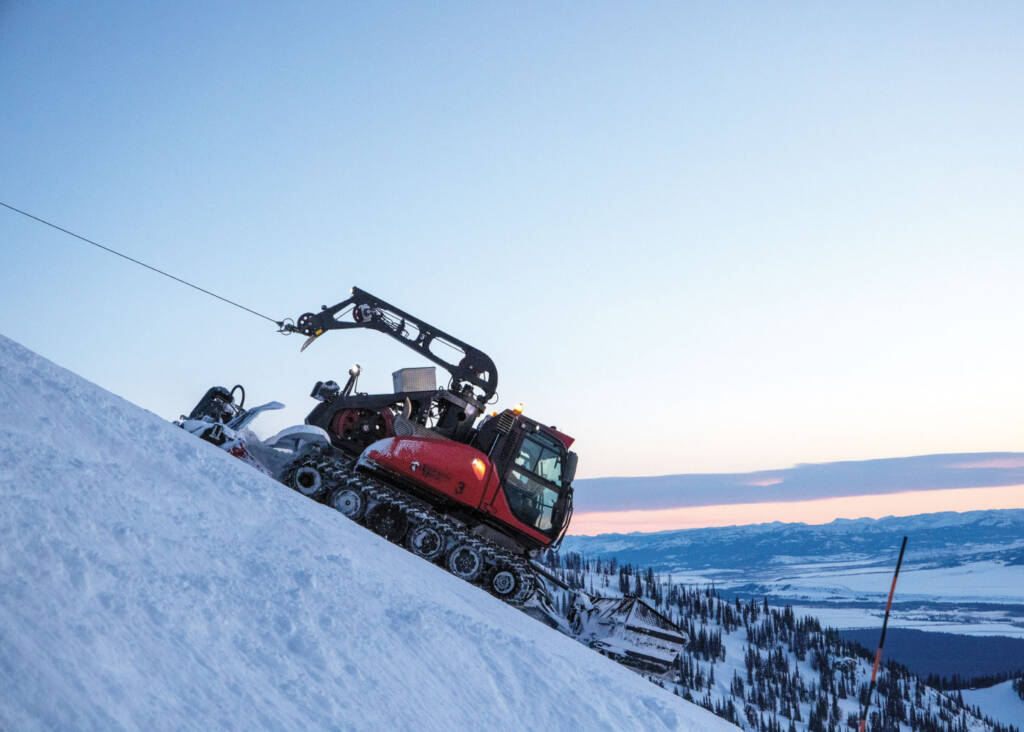
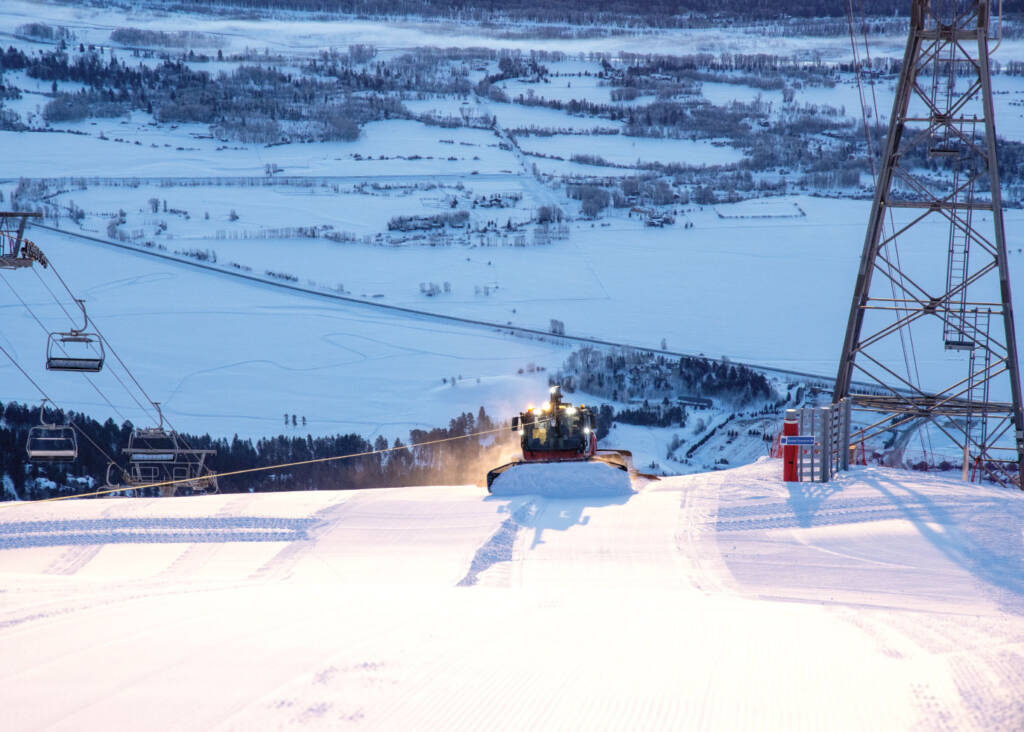
The steeper runs are groomed by winchcats, grooming equipment with winches attached to assist with both climbing and descending especially steep slopes.
The winchcats are attached to some 60 anchors interspersed throughout the resort. Where there is dirt available, the anchors are built using a 10-inch-diameter, thick-walled, snowmaking waterpipe filled with concrete, buried five feet deep. “They’re pretty sturdy. With the 10-inch pipe full of concrete, they’re pretty bomber. If you bury them right, they’ll last,” said Ward.
On rockier surfaces, they use a rock drill to bore a 1¾-inch hole in the rock. A threaded rod is then exploited into the rock-face, and winch into that. If needed, cables are extended from the anchor to flatter surfaces where the grooming equipment can park more safely.
Ward’s work often extends into the summer. While the ski runs close on April 10, in the summer they’re usually involved in installing more snowmaking equipment as well as summer grooming. This usually involves clearing rocks from ski runs so groomers can get onto those runs earlier.
“We’ll clear the run of rocks and debris so that we can begin grooming those runs with only, say, 18 inches of snow,” said Ward.
Summertime also sees the resort transform, attracting mountain bikers, trail runners and rock climbers. JHMR even has a Via Ferrata.
Asked what it’s like to be part of so many memories after 48 years of working at JHMR, Ward said, “It’s great to be part of those memories, and to think that people learned to ski and had great experiences on runs that we take care of. I think the terrain does a lot of that on its own too. But I’d like to think that our grooming has inspired people, and that guests have more confidence skiing on our slopes.”

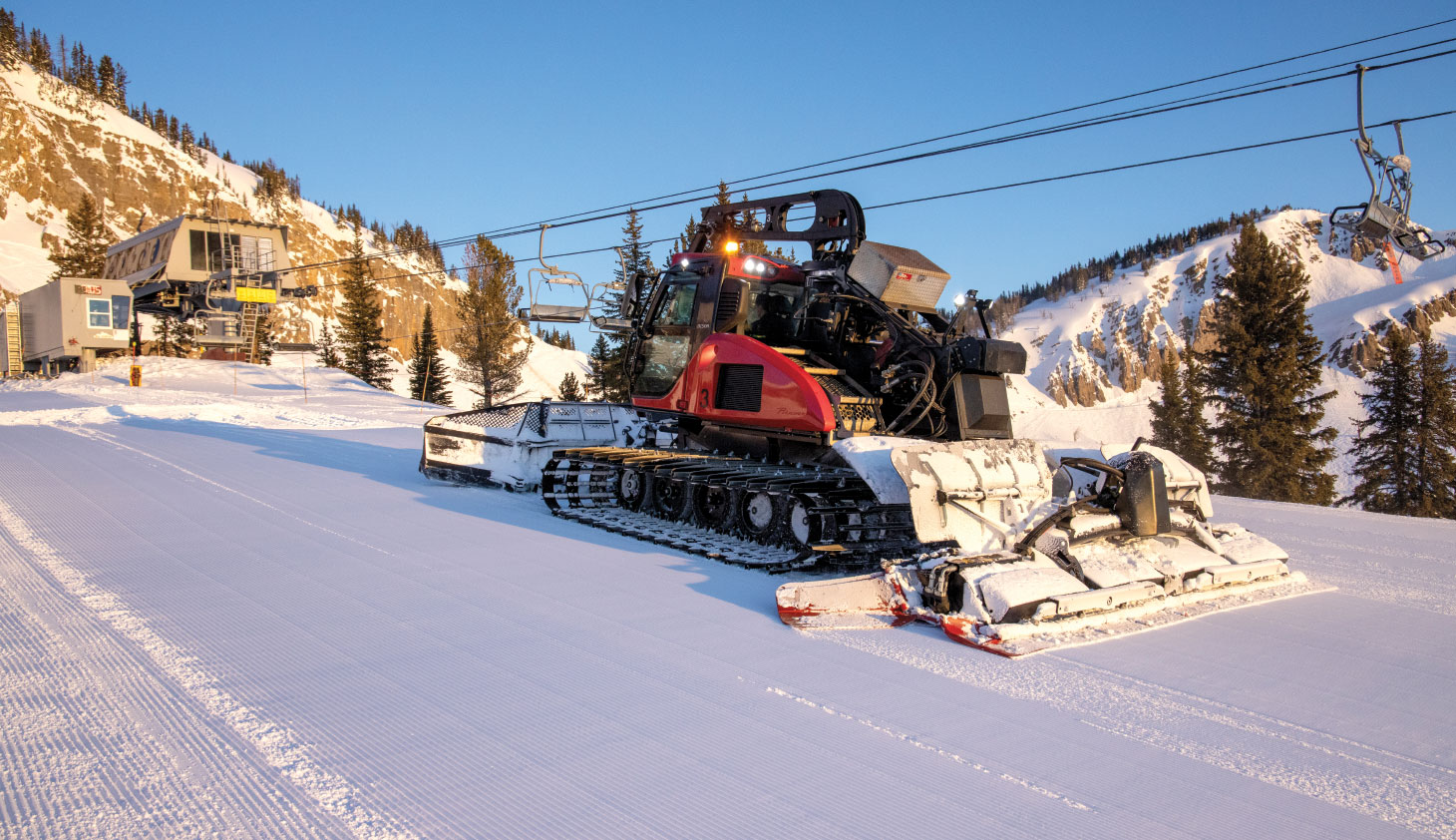
![[image placeholder]](https://www.snowopsmag.com/wp-content/uploads/2023/09/placeholder@2x-890x664.png)